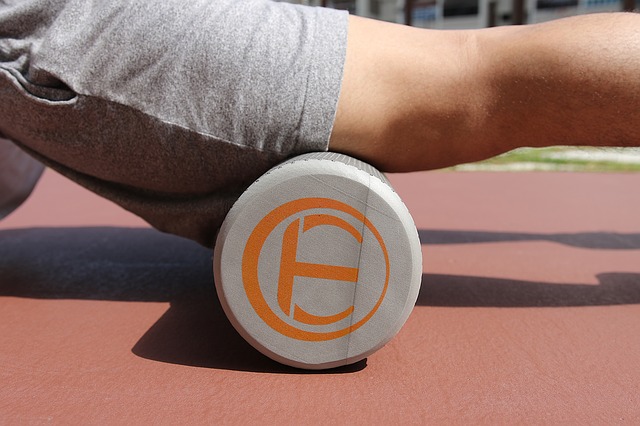 Photo courtesy of Pexels
Photo courtesy of Pexels
No matter what kind of exercise is your favorite, at some point or another, you have probably had someone recommend that you try foam rolling. Say you are a runner and are struggling with shin splints — here come the foam rolling recommendations. Or maybe you are a swimmer feeling the strain and had a coach recommend you use a foam roller.
But, if you aren’t sure if foam rolling actually does anything, you may be hesitant to try. Thing is, there is actually a lot of research pointing to the usefulness of foam rolling.
Prevent Injuries With A Foam Roller Routine
It almost seems like a matter of course that if you exercise regularly, you will become injured at some point, especially if you engage in competitions like weightlifting competitions, races for cycling and running, and other events. But you don’t necessarily have to become injured if you are engaging in the right practices.
Keeping up with a routine of foam rolling can help prevent the developing of future injuries, according to a relatively recent study on the effectiveness of using a foam roller. A group of participants foam rolled before working out, and the other group of participants foam rolled after exercise. Both of these groups experienced reduced neuromuscular exhaustion after just one session of foam rolling.
So, if just one session of foam rolling brings those results, think about how much of a positive impact foam rolling can have when worked into your preventative exercise routine.
Use A Foam Roller To Help With DOMS
While you may not be familiar with the term, delayed-onset muscle soreness (DOMS) can greatly impede physical performance. To help manage muscle soreness, a running expert at Treadmill Reviews.com said, “Foam rolling may not feel good initially when you do it, but you can definitely speed up your DOMS recovery if you stick with it.”
Researchers have also come to the same conclusion by testing a group of participants by having them do a variety of dynamic and physically stressful exercises. Those participants who were assigned to foam roll to help manage muscle fatigue afterward were able to recover faster and even perform better.
If DOMS has been interrupting your exercise routine, foam rolling may be the answer to your problems and allow you to move more freely as well as recover more quickly.
Increase Flexibility And Joint Mobility
Not only can you benefit from using a foam roller as part of your fitness routine, but by foam rolling regularly, you can increase your overall flexibility and joint mobility. By foam rolling, you can perform self-myofascial releases, which releases knots of tension in your body and allow you to have a greater range of motion.
With a better range of motion, you can enjoy greater joint mobility, which assists in helping you be more flexible.
Should You Stretch Or Use A Foam Roller?
Now, you may be wondering if you need to stretch if you are foam rolling, as using a foam roller provides many of the benefits that stretching does. But that maybe may not be the best way to look at it.
Foam rolling and stretching are complementary exercises that can work together to make your exercise routine well-rounded. By doing both, you can better protect yourself from future injuries and recover from strenuous workouts faster.
By adding foam rolling to your workout routine, you can enjoy greater flexibility, faster muscle recovery, and injury prevention, whether you are doing unique treadmill workouts, lifting weights, or other types of exercise.
Foam rolling and stretching are complementary exercises that can work together to make your exercise workout more well-rounded.